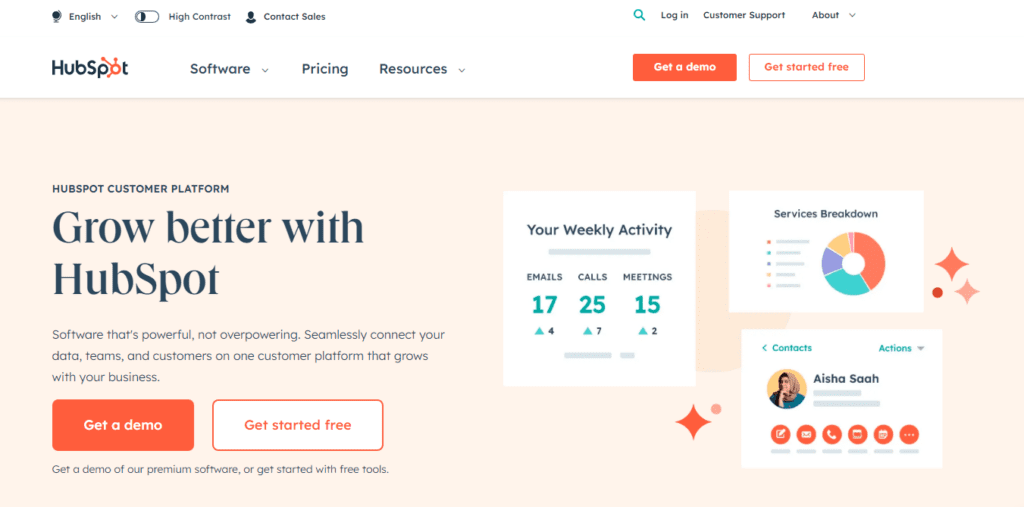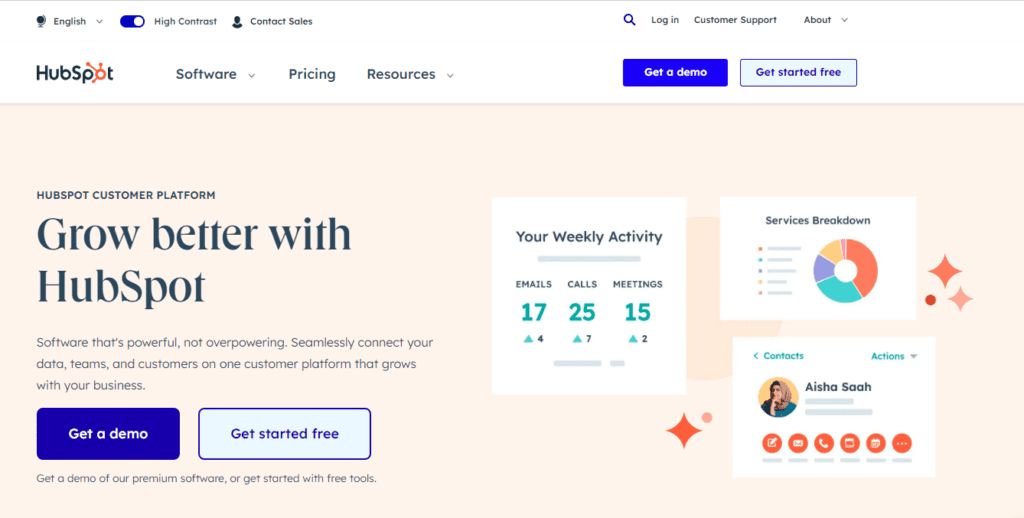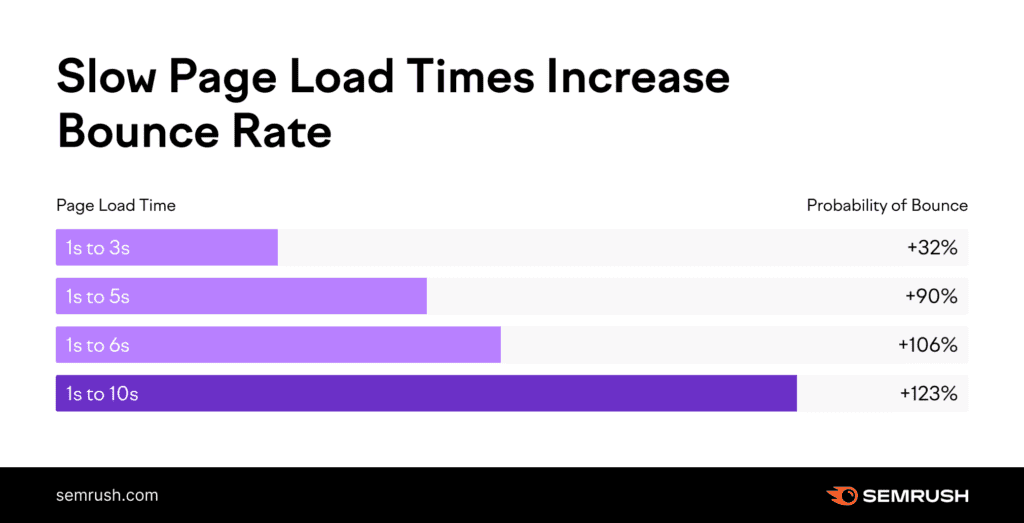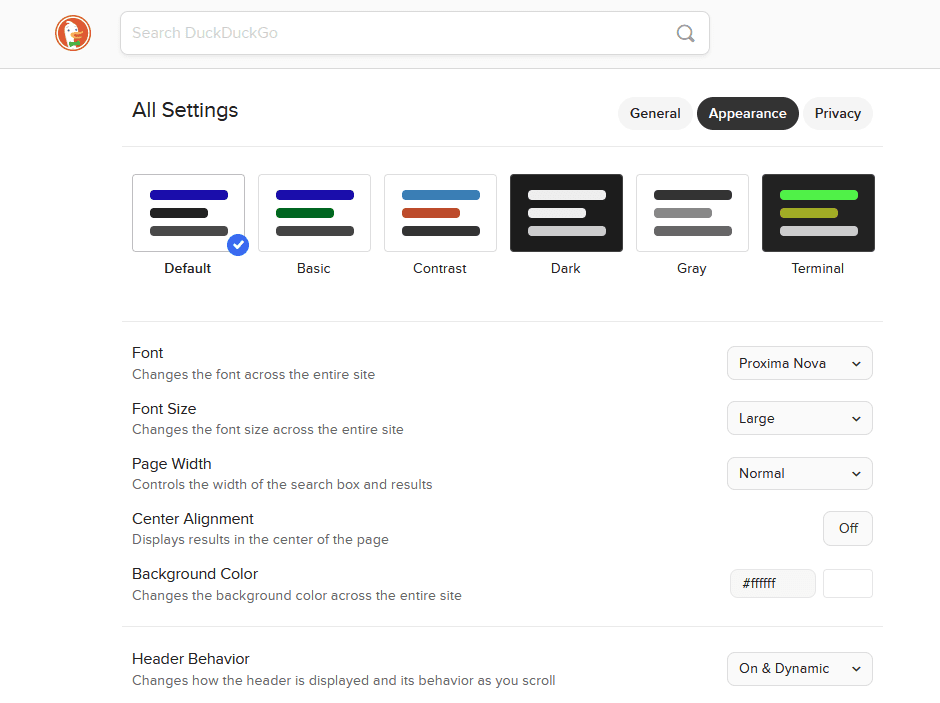UI and UX Design Trends: How To Design Incredible Interfaces 2024
Ever been frustrated by a website’s poor user experience and moved straight on to a competitor’s website? Or stumbled upon a site so impressive and immersive that you just could not close the tab without exploring a little more? These instances prove the pivotal role of UI and UX design in shaping a website visitor’s journey.
Beyond the traditional norms in UI/UX design, every year brings with it a fresh set of trends to explore. And ignoring them is not an option especially when your competitors are already tapping into them and wooing your target audience. That’s why it’s imperative for brands to understand the UI and UX design trends each year, and identify those that resonate the most with them. This way, they can seamlessly integrate these trends, enhancing the user experience without losing their signature brand elements.
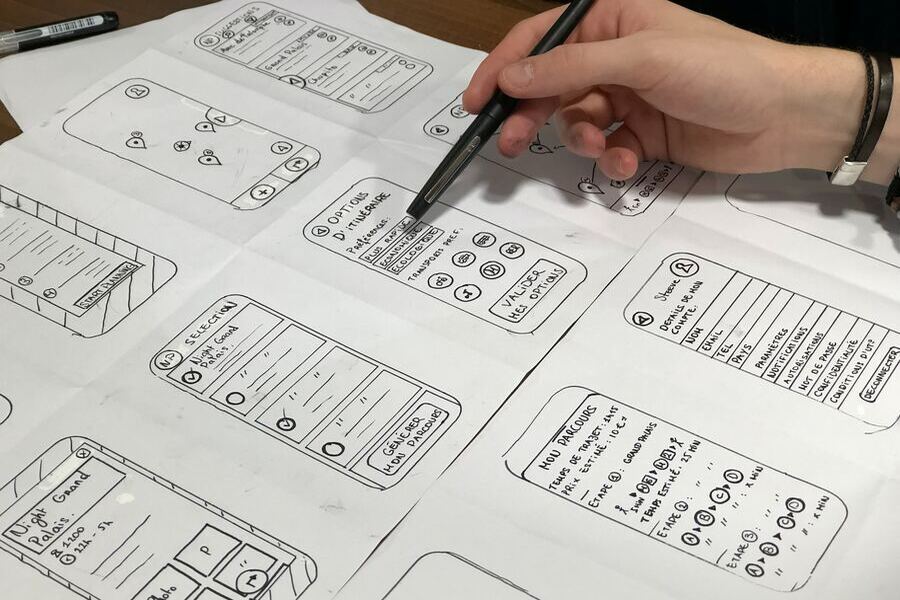
If you wish to know about the predictions in terms of the aesthetics of web interfaces, check out our previous blog on web design trends 2024 here.
This one will focus on UI and UX design trends for 2024, an overview of expected changes in user interaction and experience.
With that clarified, let’s now get started!
- UI and UX Design Trends – 7 Predictions for 2024
- 1. Embracing accessibility for inclusive UX design in 2024
- 2. Ethical design – navigating UX design responsibly
- 3. Prioritize faster loading speeds
- 4. AI-driven hyper-personalization
- 5. The evolution of an intuitive Dark Mode in 2024
- 6. Optimizing for a more personalized VUI
- 7. Getting ready for mixed reality
- Create User-Friendly UI Designs with KIMP
UI and UX Design Trends – 7 Predictions for 2024
Before we get started, let’s quickly recap the UI design trends that were popular in 2023 to understand which ones are extending their influence into 2024 as well.
- Adopting AR/VR
- Dark mode optimization
- Integration of 3D elements
- Optimization for Voice UI
- Micro-interactions
- Scrollytelling
Nearly all of these trends are likely to rule the UI and UX design realm in the coming months as well. Of course, with the addition of a few new ones. So, how have these trends evolved over these past few months and what new trends should you prepare for? Let’s find out.
1. Embracing accessibility for inclusive UX design in 2024
Brands are shifting their focus to creating a more user-friendly, a more inclusive space for every website visitor. Prioritizing accessibility is one of the most important UX design trends to look out for. In fact, creating an interface that makes the interactions more convenient for users with diverse requirements has a positive influence on the brand image as well.
In short, creating accessibility-focused interfaces involves ensuring that websites and applications are easy to perceive and interact with for a wide range of users, regardless of their physical or cognitive capabilities.
Data shows that just about 3% of the internet is designed to be accessible to people with disabilities. This is a tentative estimation from 2022 showing the pressing need for creating more accessible web interfaces. Hence embracing accessibility is also one of the much-needed UX design trends for 2024.
The BBC website is one of the most popular examples when talking about accessibility in UX design. The website is known for its convenient and consistent keyboard shortcuts and screen reader optimization.
KIMP tips to improve the accessibility of UX design:
- Add clear and purposeful image alt text for screen readers to deliver accurate information about the media on the page.
- Ensure easy keyboard navigation.
- Choose accessible fonts.
- Ensure that there is a clear hierarchy on the page.
- Pay attention to color contrast especially to allow users to understand interactions and feedback. The HubSpot website displays a toggle button on top of the page to allow users to switch to a high-contrast mode for better accessibility. The first image below shows the regular page and the second image is in the “High Contrast” mode.
Looking to work with professional designers for your UI design requirements? Get KIMP!
2. Ethical design – navigating UX design responsibly
In addition to accessibility, there’s one other crucial factor – ethics in UX design. And it’s like that that creating ethical and transparent digital interfaces is one of the most crucial UX design trends to keep an eye out for.
Several events from 2023 point toward the increasing focus on ensuring the privacy of digital users. The $1.3 Billion fine on Meta for the violation of E.U. Data Privacy Rules, and Google’s new Tracking Protection feature to restrict third-party cookies are some of the most recent ones on this list. Developments like these reiterate the need for focusing on ethics in digital interfaces accessed by users.
Moving forward from 2024, we believe that websites will steer away from dark user experiences that manipulate users into taking an action that benefits the brand without a clear disclaimer to the user.
In simple words, ethical design tackles concerns about privacy and data security establishing trust and goodwill with users. Which in turn boosts the brand’s image. Additionally, ethical UX design helps build brand trust and earns the long-term loyalty of customers as well.
KIMP tips to create ethical UX designs:
- In contact forms avoid preselecting options in favor of your brand. Instead, prioritize transparency and user autonomy by allowing users to make intentional choices based on their preferences and needs.
- Clearly articulate the data collection practices and how user data will be stored and processed along with an option to opt out of sharing data.
- Avoid dark patterns in UX design that mislead users into making a decision that’s not in their best interest.
- Give users the power to choose what they share and the option to delete their data and account when required.
- Clearly indicate when the user is being redirected to a payment page.
3. Prioritize faster loading speeds
Even the best-looking websites might not fulfill their purpose if they have long loading times.in fact, data shows that about 39% of web users might abandon content when the loading time is long. So, you definitely need fast-loading UI designs for the best user experience.
So, one of the biggest UX design trends to know about is to pay attention to your website’s loading speed. This helps you improve user satisfaction by minimizing wait times and ensuring smooth and responsive navigation.
Website loading speeds are critical now more than ever. In fact, data shows that in the B2B segment, a website that has a 1-second loading time is about three times more likely to convert than a website that takes 5 seconds to load. So, poor loading times can bring down conversions and thus hurt your revenue in the long run.
Additionally, even a 1-second increase in the page load speed could mean a huge surge in the bounce rate of the website. The below graph from Semrush shows an overview of the increase in bounce rate as the loading speed of the website increases.
The exponential growth of data online is one of the main reasons behind faster loading speeds becoming one of the most important UX design trends for 2024. Users expect instantaneous information and therefore websites that load fast are the ones that gain a competitive edge.
KIMP tips to improve page loading speeds:
- In addition to choosing the right format for the images and videos on your website, optimize them to reduce file sizes without compromising quality.
- Incorporate lazy loading where the loading of images and other elements happens only when the user scrolls down to the respective section.
- Make the most of browser caching and consider including a content delivery network.
4. AI-driven hyper-personalization
Personalized UX designs are the way forward. That’s something you already know! But what’s new is leveraging AI to achieve this. So, AI-driven personalization is likely to be one of the most predominant UX design trends in 2024.
This trend involves the deployment of AI to track and monitor user behavior to understand any gaps in the UI design and address them instantly. The next step is the enhancement of the UI by personalizing content and layout based on past interactions. These steps improve user engagement.
All of these steps help improve content discovery. Visualize the hard-to-ignore movie recommendations that Netflix presents with the help of its intuitive recommendation engine.
Spotify also recently introduced DJ, an AI-powered playlist recommendation feature to help users discover new music based on their preferences and listening behavior.
These are all examples of delivering tailor-made hyper-personalized digital experiences that keep users coming back for more. In other words, AI-powered personalization improves engagement, conversion, and customer loyalty as well.
KIMP tips to leverage AI for personalized experiences:
- Monitor and pinpoint specific user pain points you wish to address and then align these with goals like engagement, conversion, and content delivery.
- Identify the right AI tools like intuitive recommendation engines for content discovery.
- While you are at it, do not forget data privacy concerns because, with the integration of AI tools, you are collecting user data to provide better personalization. So, the concept of ethical UX design takes precedence.
Now let’s move to trends that were popular in 2023 and might continue to be so in 2024. Let’s look at what’s changing and how they have evolved.
5. The evolution of an intuitive Dark Mode in 2024
Optimizing the UI for dark mode is one of the recently popular trends. And this is also one of the most anticipated UX design trends for 2024. But what’s changing this time is that the dark mode is likely to be more intuitive rather than being just a visual switch.
In other words, dark mode will likely be a more enhanced user experience rather than just some changes to the colors and visuals displayed on the screen.
In short, the idea is to make dark mode appear more like an upgrade to the interface rather than a compromise. An exciting switch that users would voluntarily explore rather than appearing like the users are missing out on certain things.
For mobile versions of the websites, this includes tapping into various other triggers and leveraging relevant sensors to optimize the dark mode in addition to automatically toggling to it.
- This includes toggling based on ambient lighting conditions.
- Additionally, the triggers could also include digital well-being settings on devices like the Focus modes on iOS.
Combining the other UX design trends and this one, you could also aim to provide users with better control of the display settings on your website. Renowned privacy products company DuckDuckGo has an intuitive user-friendly website that allows users various ways to customize the appearance of the website for a more convenient experience.
KIMP tips to create a more intuitive dark mode:
- For the most effective dark mode aesthetics consider the contrast between the foreground text and visuals and the background. Too much contrast and too little can both cause eye strain.
- Use sleek and subtle transitions to indicate toggling between dark and light modes.
- Place a toggle switch in an easily accessible spot so that users can conveniently choose to switch between them as required.
6. Optimizing for a more personalized VUI
From our recap you perhaps remember that optimizing for voice-based interactions was a trend popular in 2023 as well. But what’s like to change about this and make it a noteworthy one among the UX design trends for 2024? The ability to deliver natural conversations! AI has evolved explosively over the past few months. So, UX design this year will focus on moving away from scripted interactions toward using AI assistants that deliver human-like responses.
Incorporating the other UX design trends here, including an accessible VUI that recognizes users with diverse accents, including non-native speakers will take center stage. The UX design personalized for better voice commands also makes the design accessible.
KIMP tips for UX design personalization for VUI:
- Make it easy for users to toggle between voice and text inputs.
- Include micro-interactions to indicate the reception of the voice inputs and to provide feedback.
- Ensure that you have a clear plan of action in place to handle any errors encountered in interpreting the commands.
7. Getting ready for mixed reality
This also combines the evolving trend of tweaking the interfaces for mixed reality. Now that AI tools like ChatGPT allow various forms of inputs besides text, like voice and image inputs, optimizing your UX design for multimodal inputs is a future-proof step. This includes getting ready for spatial audio, natural voice commands as well as gesture controls, and more.
After all, we live in an era where we have portable AI projectors (think Humane’s AI Pin) that let you view your apps projected onto any surface at any time.
KIMP tips to optimize UX design for mixed reality:
- When creating immersive realities, ensure that the ambiance is taken into consideration. Realistic rendering delivers the best kind of experience to users.
- Similar to optimizing for VUI include clear micro-interactions in the form of visual and auditory cues to indicate any progress in the interaction.
Create User-Friendly UI Designs with KIMP
With all these UX design trends in mind, are you ready to transform your UI design? What if you could work with a dedicated team of designers who will take care of all your website design and app design requirements as well as your marketing designs and branding designs? And that too at a flat monthly fee? Sounds good, right? That’s precisely what you get with an unlimited design service, like KIMP.
Register now for a free 7-day trial!

